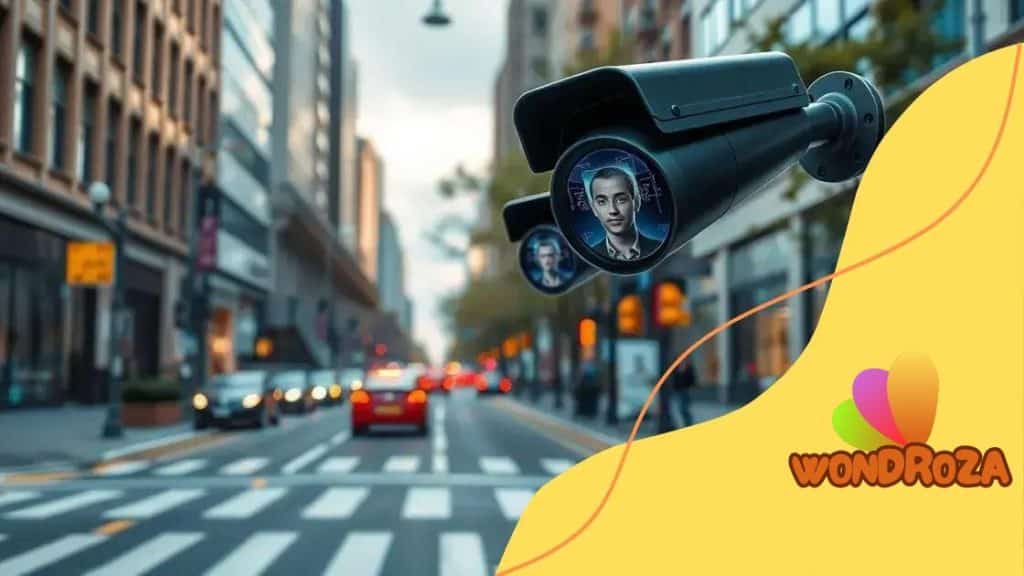The role of facial recognition in enhancing public safety

The role of facial recognition in enhancing public safety involves improving crime prevention through real-time monitoring, accurate identification of suspects, and integration with AI technology while balancing ethical concerns and privacy rights.
The role of facial recognition in enhancing public safety cannot be overlooked. As technology evolves, our cities are becoming smarter, making use of innovative solutions to protect citizens. But how far can these advancements really go?
Understanding facial recognition technology
Understanding facial recognition technology is essential in our rapidly evolving world. This technology uses algorithms to identify and verify individuals by analyzing their facial features. As we dive deeper, we’ll explore how this technology works and its applications.
How facial recognition works
Facial recognition algorithms break down a face into key features, such as the distance between the eyes, nose shape, and jawline. By creating a unique facial signature, the system can compare this signature to a database of known faces.
Applications of facial recognition technology
- Security systems in public spaces
- Enhancing law enforcement capabilities
- Streamlining airport security checks
- Personalizing user experiences in retail
In addition to security, facial recognition technology is transforming various industries. In marketing, businesses can analyze customer demographics and preferences, helping them create targeted campaigns. However, it is crucial to balance innovation with responsible use to protect individual privacy.
The impact of this technology is vast, influencing how we perceive safety and security in our society. As we continue to harness facial recognition advancements, understanding its implications on privacy rights and ethical concerns is paramount.
Monitoring systems and diverse applications are reshaping our lives, making safety measures more effective. Nevertheless, ethical considerations must accompany these tools, ensuring that innovations like facial recognition are used responsibly.
How facial recognition improves crime prevention
How facial recognition improves crime prevention is a significant topic in modern law enforcement. This technology assists authorities in identifying suspects quickly and accurately, leading to faster responses in critical situations.
Real-time monitoring
One of the key advantages of facial recognition is its ability to enhance real-time monitoring. Surveillance cameras equipped with this technology can analyze crowds and flag any suspicious behavior instantly. This capability greatly improves the effectiveness of emergency responses and increases overall public safety.
Identification of known criminals
Facial recognition systems can scan databases of known offenders to identify potential threats. By matching faces captured in public spaces with existing records, law enforcement can proactively intervene before a crime occurs.
- Enhances situational awareness
- Relies on large databases for accurate identification
- Streamlines communication among law enforcement agencies
Moreover, utilizing facial recognition can help prevent crimes even in advance. For instance, if a known offender enters a high-risk area, patrol units can be alerted instantly, allowing them to take preventative measures. This proactive approach helps reduce crime rates significantly.
The integration of this technology extends beyond traditional policing methods. In places like shopping malls and transportation hubs, facial recognition systems assist in ensuring safety by monitoring crowds and identifying any unlawful activity. This not only helps in crime deterrence but also reassures the public, knowing that safety measures are in place.
Ethical concerns surrounding facial recognition

Ethical concerns surrounding facial recognition are becoming increasingly important as the technology becomes more widespread. While it offers benefits for security and convenience, it also raises significant privacy issues.
Privacy issues
One major concern is that facial recognition technology can lead to unwarranted surveillance. People may be monitored without their consent, affecting their sense of freedom. This constant observation raises questions about our rights to privacy in public spaces.
Bias and discrimination
Another pressing issue is the potential for bias. Studies have shown that facial recognition systems can be less accurate for people of certain ethnic backgrounds, which can lead to discrimination. If law enforcement relies on these systems, it may unfairly target specific groups, reinforcing existing societal inequalities.
- The accuracy can vary widely among demographic groups.
- It raises alarm about fairness and equality in law enforcement.
- Technology must be transparent and accountable.
Moreover, there is a risk of misuse. Unauthorized access to facial recognition databases can occur, allowing individuals to track others without permission. This misuse of technology could threaten personal safety and freedom.
As communities debate the use of facial recognition, it is essential to find a balance between safety and ethical practices. Open discussions on guidelines and regulations can help ensure responsible deployment while protecting the public’s rights.
Case studies of effective implementation
Case studies of effective implementation of facial recognition technology showcase its potential benefits across various sectors. By looking at real-world examples, we can see how this technology dramatically improves security and efficiency.
Public safety enhancement
In one notable case, a major city implemented facial recognition in public transportation systems. By doing so, they were able to quickly identify individuals with outstanding warrants. The results were significant, leading to a noticeable drop in crime rates in transit areas.
- Integration with surveillance cameras increased monitoring efficiency.
- Quick identification of suspicious individuals allowed for prompt intervention.
- Enhanced public perception of safety in transit systems.
Another powerful example is in the retail sector, where one large retailer deployed facial recognition technology to enhance loss prevention. By monitoring store entrances and exits, the system could identify repeat shoplifters and alert staff automatically. This strategy not only reduced theft but also improved overall inventory management.
Beyond security, facial recognition has found utility in customer service. A hotel chain adopted this technology to personalize guest experiences. Using facial recognition at check-in, they streamlined the process, allowing repeat guests to receive quick, tailored service, leading to higher customer satisfaction rates.
These case studies illustrate that when used responsibly, facial recognition can foster an environment of safety and enhance customer interactions. As more organizations recognize its potential, we can expect to see wider adoption and innovative applications of this technology.
Future trends in facial recognition and public safety
Future trends in facial recognition and public safety are expected to reshape how we think about security. As technology advances, we will witness significant changes in how this technology is implemented in various sectors.
Integration with AI and big data
One of the key future trends is the integration of facial recognition with Artificial Intelligence (AI) and big data analytics. This integration will lead to smarter and more responsive systems. For example, machines will analyze vast amounts of data in real-time to provide instant insights that can enhance public safety.
Improved accuracy and reliability
We can also anticipate great improvements in accuracy. Future algorithms will reduce biases and increase the reliability of facial recognition systems. This advancement is crucial for ensuring fairness and maintaining public trust in law enforcement.
- AI will enhance the ability to distinguish between similar faces.
- Continual learning systems will evolve with ongoing data input.
- Partnerships between tech companies and law enforcement will drive innovative solutions.
Another exciting development is the potential for wearables equipped with facial recognition technology. Imagine police officers using smart glasses that can identify individuals in the crowd, helping them respond faster to incidents and enhancing situational awareness.
As these trends unfold, public dialogue surrounding ethics and privacy will be crucial. Ensuring that facial recognition systems are used responsibly will determine how effectively they enhance public safety without infringing on personal freedoms.
FAQ – Frequently Asked Questions about Facial Recognition and Public Safety
How does facial recognition improve public safety?
Facial recognition enhances public safety by quickly identifying suspects and preventing crime through real-time monitoring.
What are the ethical concerns regarding facial recognition technology?
Ethical concerns include privacy rights, potential bias in identification, and the risk of misuse for surveillance.
What future trends are expected in facial recognition technology?
Future trends include improved accuracy, integration with AI and big data, and the development of wearable technology for law enforcement.
How can communities ensure responsible use of facial recognition?
Communities can promote transparency, set clear regulations, and engage in public discussions about the ethical implications of facial recognition.





